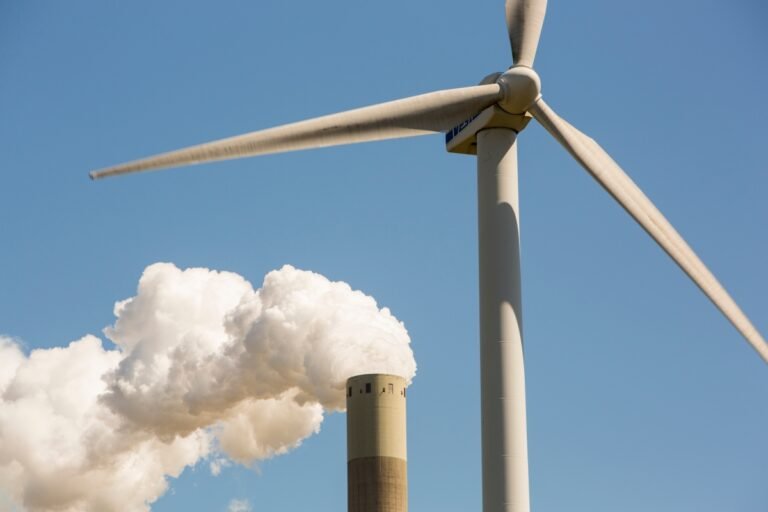
Much of the intriguing climate tech that crosses our desks is theoretical or only just coming to market — think: tech that sucks carbon out of the sky, emerging lithium-ion battery alternatives and bio-plastics that’ve yet to seriously scale.
The Toronto-based venture firm just announced the close of a $335 million fund (USD) — its third and largest to date.
“If you’re not making money, you’re not having impact,” McCaig told TechCrunch.
“Climate tech tends to be fairly distributed around the globe, more so than AI and software, which tends to concentrate in California,” added McCaig.
The venture firm’s second fund clocked in at $150 million (USD), while its first — a seed fund — totaled $30 million.

As more than $1 trillion flows into climate tech, incentive-tracking apps find firm footing Websites, apps and startups are rushing to track government incentives for climate techSpend some time with people in the climate tech world and you’ll soon learn that a lot of them share something in common: They’re not used to having a lot of money.
That’s because for years, climate represented a cost for many businesses, not an opportunity.
Investment in climate tech has been gathering pace over the past five years or so.
The IRA alone might yield more than that since many of the tax credits are uncapped; Goldman Sachs estimates the law’s climate provisions might pay out $1.2 trillion in incentives, spurring some $3 trillion in private investment.
Making sense of it all“Unfortunately, there’s no comprehensive database out there for all of these rebates and incentives,” said Thomas Stephens, co-founder of Upfront, a startup that’s cataloging incentives for merchants.

More than 40 investors share their top predictions for 2024 Investors aren't sure about the fate of IPOs and AI next yearIf I had to characterize 2023, I’d say it was the year of the great venture divide.
To find out, TechCrunch+ surveyed more than 40 venture capital investors about how they are preparing for next year and what they expect.
Some investors think exits will return in full force in 2024, but others predicted the industry would not see meaningful liquidity until 2025.
Several investors expect AI investing to cool next year, and an almost equal number think the sector will continue to remain red hot, only in different ways.
Lisa Wu, partner, Norwest Venture Partners: As multi-stage investors, we meet founders wherever they are on their journeys.

But because of the country’s naturally dry and biodiverse climate, it’s particularly vulnerable to extreme weather events that have been exacerbated by climate change.
Australia has experienced its fair share of a climate catastrophes, which has only fueled its climate tech startups into action.
The hype for climate tech in Australia is real, as long as it can be sustained.
Local VCs are most excited about the sector this year, with climate and cleantech dominating in funding and deal count in Q3 2023.
In 2022, climate tech in Australia raised $553 million in capital, compared to $338 million in 2021, according to a report from Climate Salad, a community of Australian climate tech stakeholders.

There are some minor redactions, but the bulk of this slide deck is intact.
In 2022, around 300 million liters of sustainable aviation fuel was produced, and that doubled this year to more than 600 million liters, per the International Air Transport Association (IATA).
Let yourself nerd out about the techWhen you’re building a deep tech company, the tallest pole in the tent is always going to be the tech itself.
Make it work, then make it work at small scale, then scale to production scale.
In the rest of this teardown, we’ll take a look at three things Metafuels could have improved or done differently, along with its full pitch deck!

In the fight against Methane, a key GHG, Valley investors have hit upon an unusual target: Cow burpsWhat do iconic Valley investors Zachary Bogue and Chris Sacca have in common?
And one of the bigger issues at the most recent COP meeting was a pledge to reduce methane emissions, which are growing rapidly.
And a major UN report said “urgent steps” are necessary to reduce methane if global warming is to be kept within a manageable limit.
Mootral says its current Ruminant supplement can reduce methane emissions from dairy cows by up to 38 percent on commercial farms.
CH4 Global — which is backed by the aforementiioned Zachary Bogue of DCVC — employs seaweed in cow feed to reduce their methane emissions.

A couple years ago, when the pandemic was still in full swing, Raj Kapoor and Josh Felser started making some investments in climate tech startups.
Things must have gone well, because now they’re jumping in: The firm today said it has closed a $65 million inaugural fund, using it to back founders who are starting climate tech software companies.
Felser founded Spinner in 1997 (sold to AOL) and Crackle in 2004 (sold to Sony).
He also started the #Climate nonprofit in 2014 and a public-private COVID task force during the pandemic.
Those experiences, coupled with a growing concern for the state of the Earth’s climate, led the two to form Climactic.

I have a confession to make: I don’t usually follow the UN climate change conference proceedings until the very end.
Not because it was hosted by an oil and gas power, and not because neither President Biden nor the Pope attended.
Rather, I’ve come to view all Conferences of the Parties (COP) as lagging indicators of what needs to happen.
More recently, they’ve also become lagging indicators of what’s actually happening in the world.
Documents leaked shortly before COP28 showed that the country was planning to use the meeting to strike oil and gas deals with 15 countries.

The Venture Climate Alliance is made up of two-dozen venture capital firms that are teaming up to combat climate change. Their goal is to create a robust movement in the…

The nonprofit arts help is launching a $6 million fund to build the world’s first digital climate library to provide public access to the archives of the United Nations Framework…













